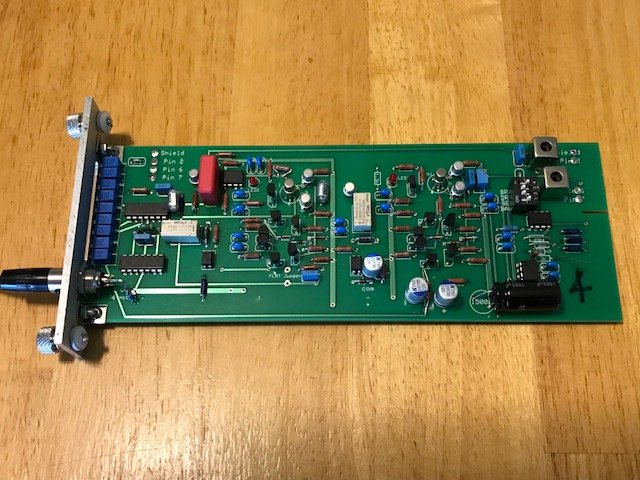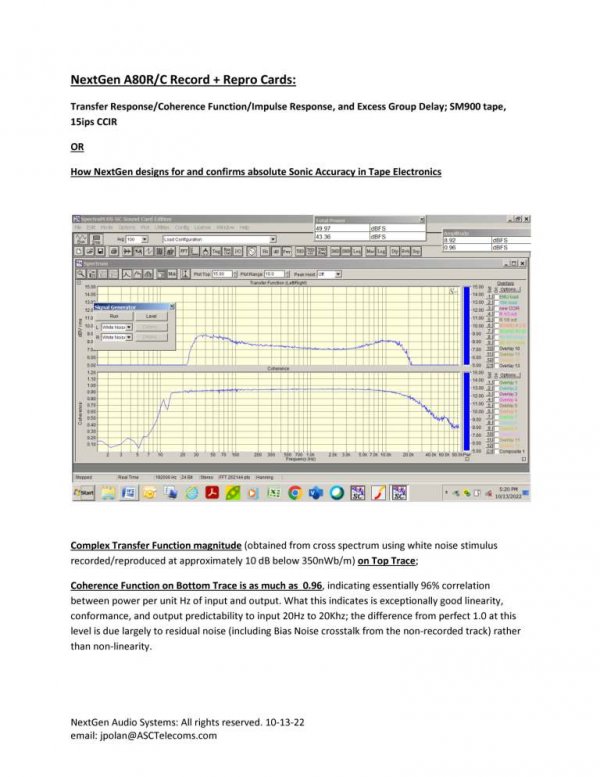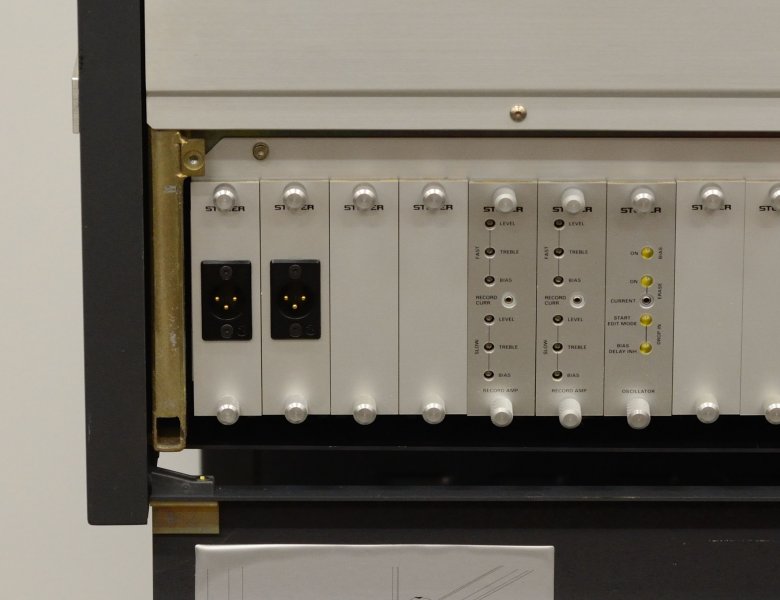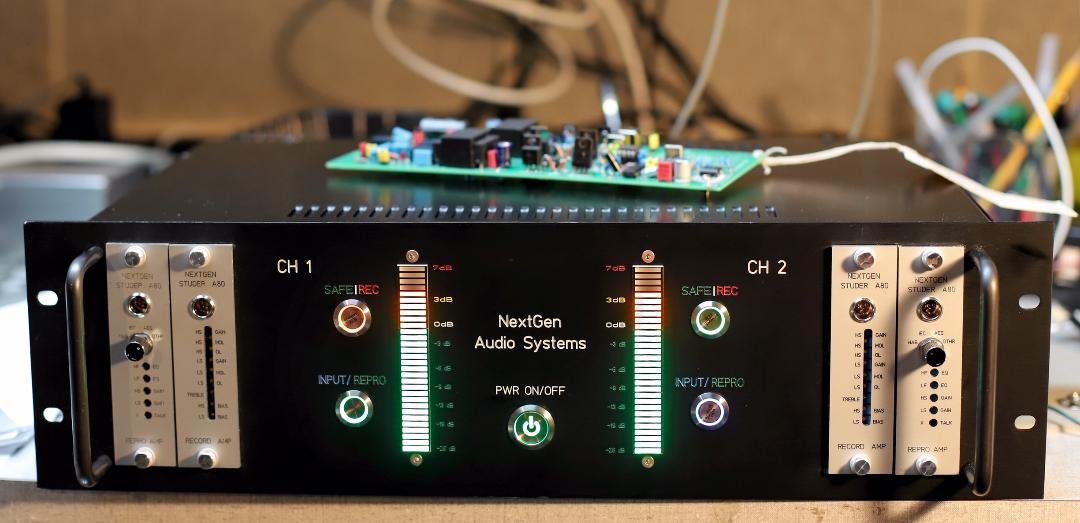Hello Antonio:
(Your English certainly beats my Italian - mostly picked up listening to Verdi, Rossini, and Puccini operas.)
Bruce is quite correct: just like the A80R/C machines themselves we supply NextGen repro and record cards in 15/30 ips and 7.5/15 ips configurations. Printed Circuit Boards, semiconductors, designs and execution are identical but have some different R and C component values based on the speeds supported.
(A note: Either speed configuration board set can be converted if needed to the other speed configuration by us, recalibrated and verified conformance if returned to us for a nominal fee.)
As far as the A80R/C power supply is concerned:
(1) we have taken design measures to insure that a properly working Studer A80 Stabilizer card will realize full specified performance from our cards; if your stabilizer card has been re-capped and works properly today in the deck then it should work without issue with our NextGen cards; we have not yet seen a case where this was not the case.
(2) the NextGen cards can be operated with well-regulated supplies up to +/- 15V which will increase headroom by about a further 2 dB if so.
The repro card supports 3 outputs:
(1) the stock Studer XLR outputs driven from an on-card transformerless balanced output - which also drives the VU meters in the Bridge;
(2) an independent Front Panel transformerless balanced output (XLR), OR
(3) a Front Panel single-ended output (female RCA).
Choice of the latter two outputs by breakout cables from the 4-pin mini XLR connector on the Front Panel.
In order of sound quality:
1. The stock Studer XLR outputs driving the VU meters are the lowest quality primarily because of the unbuffered VU meters; even so, this still sounds and measures a very significant improvement over the stock Repro cards.
2. The Front Panel balanced output is the best choice where required cable length does not permit use of the single-ended output because of RFI/EMI and hum pickup issues;
3. With a relatively short high-quality cable, the single-ended output is by far the best choice, directly off the EQ amplifier unbuffered, for purists, and often reveals suble details and musical space which can be shocking.
As to the heads, the NextGen cards support both 1/2 track and the Stereo Butterfly heads; with the effective crosstalk canceller in our repro card you give up essentially nothing in channel separation (75 dB midband) and gain almost 1.2 dB in SNR; but perhaps the biggest advantage to the butterfly heads is a much flatter bass response at and below 250Hz largely free of "Bass Bumps". Using our electronics we routinely see +/- 0.5 to +/0.6 dB error on MRL calibration tapes (fringing corrected full track cal tape) with the stereo butterfly record and repro heads, and +/- 1.5 dB error with the 1/2 track heads under the same test conditions.
While advantageous, recognize that even the larger bass errors are generally swamped by other factors, including loudspeaker characteristics, placement-, recording and recording venue- , listening position-, and listening room- characteristics; even with electronic bass correction in the listening room "accurate" bass reproduction has limited meaning at best. The usual reccomendation - and Studer's recommendation - is to adjust bass reproduction for flattest repro response in record, that is comparatively flat input to output on that machine.
Once you let me know your machine speed requirements, 1/2 track or stereo butterfly heads, desired tape type at each tape speed for record (SM900 preferred), and your preferred operating fluxivity (e.g. 350nWb/m at 15ips), we can quote actual price and delivery.
Please contact me directly if you have any further questions.
CIAO!
Jeff
jpolan@yahoo.com





